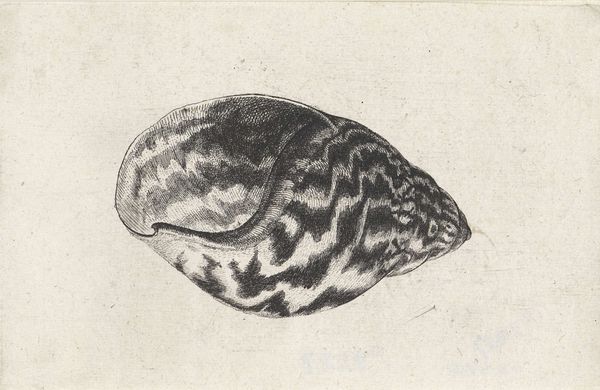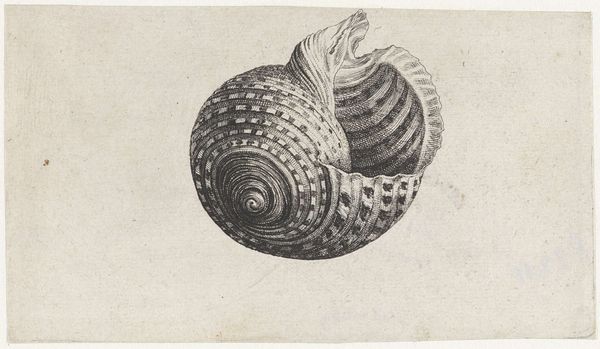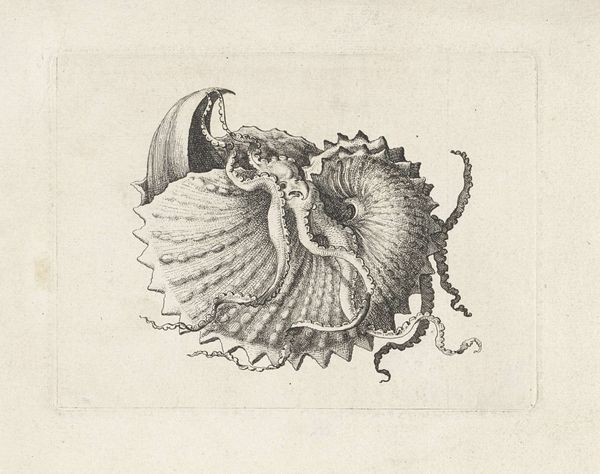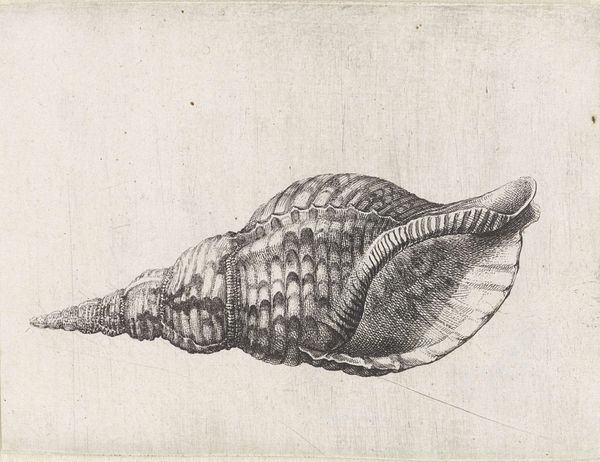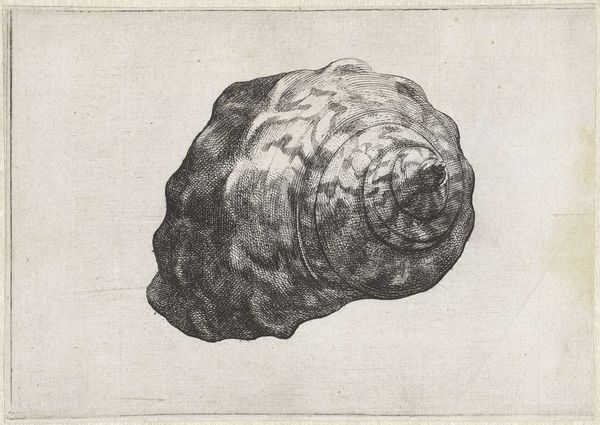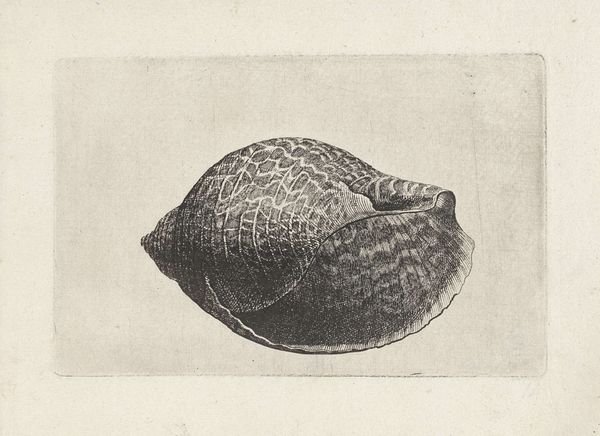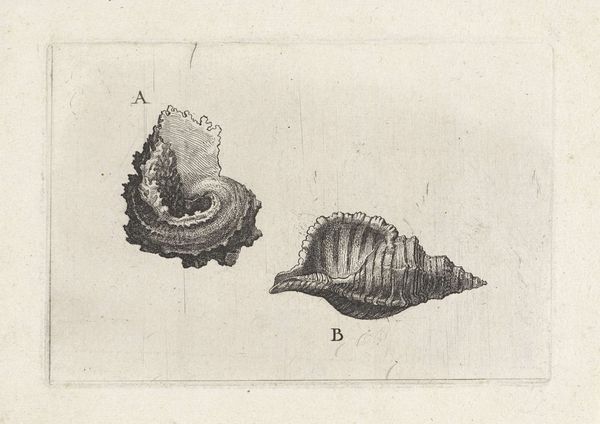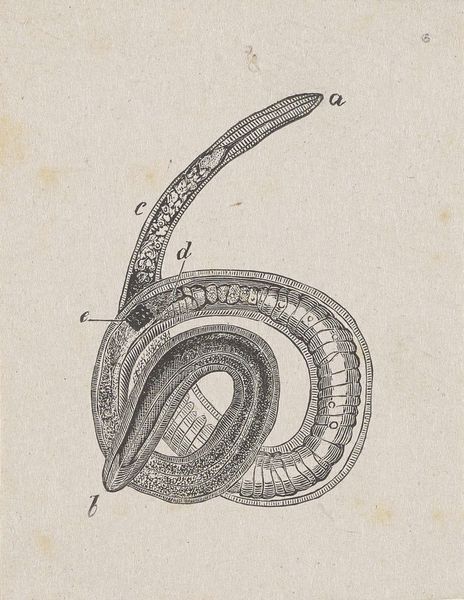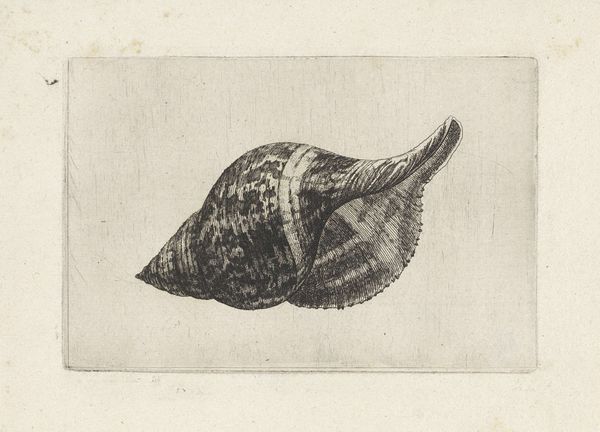
#
pencil drawn
#
toned paper
#
light pencil work
#
shading to add clarity
#
pencil sketch
#
old engraving style
#
personal sketchbook
#
pencil drawing
#
sketchbook drawing
#
pencil work
Dimensions: height 94 mm, width 143 mm
Copyright: Rijks Museum: Open Domain
Wenceslaus Hollar created this print of a nautilus shell using etching, sometime in the 17th century. With its spiraling form, a nautilus shell is already an artwork of sorts. Hollar's skill lies in translating its three-dimensional presence into the graphic language of black and white lines. These precisely describe its smooth, hard surface, and the subtle variations in tone. The etching process involves coating a metal plate with a waxy ground, then drawing through it with a needle. Immersing the plate in acid then bites away at the exposed metal, creating incised lines that hold ink. Hollar's expertise with this technology allowed for mass production and distribution of images. Prints like this made knowledge accessible, feeding early modern Europe's burgeoning interest in the natural world. The image elevates what would otherwise just be a found object into the realms of art and science. This reminds us that even a humble print can reflect a complex interplay of craft, commerce, and the pursuit of knowledge.
Comments
No comments
Be the first to comment and join the conversation on the ultimate creative platform.
